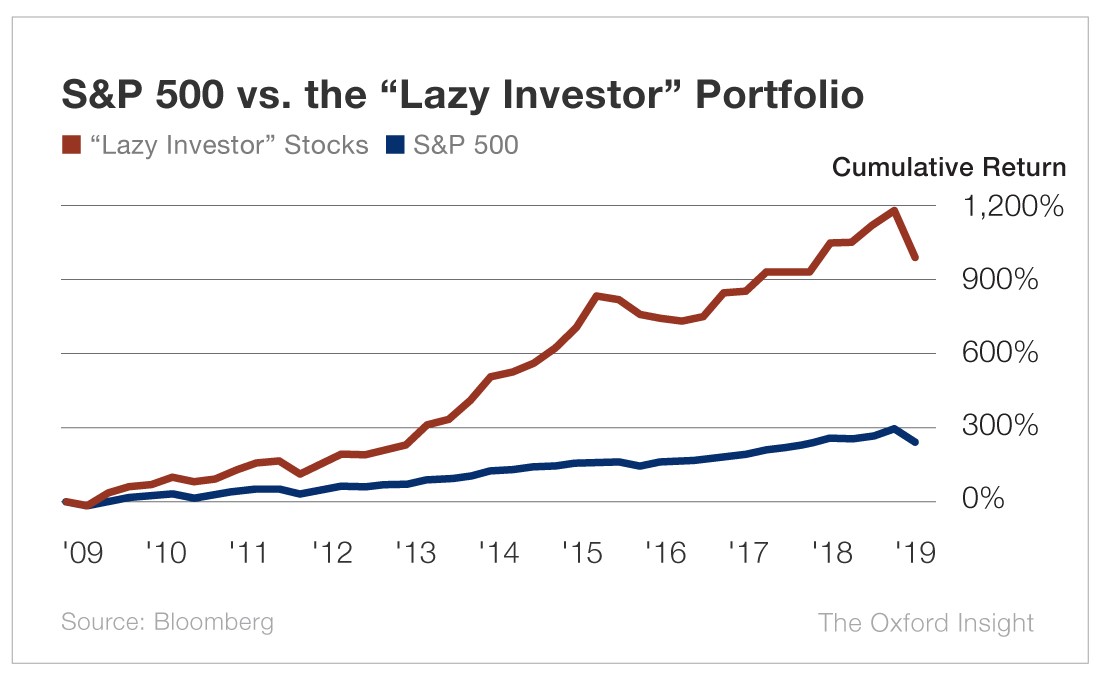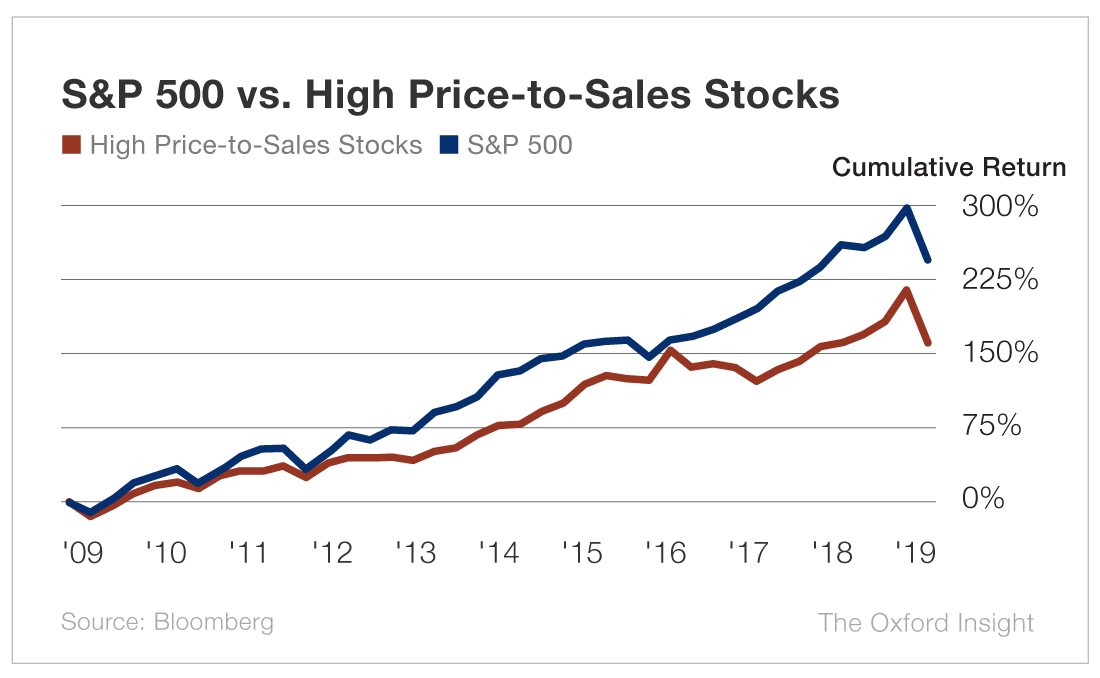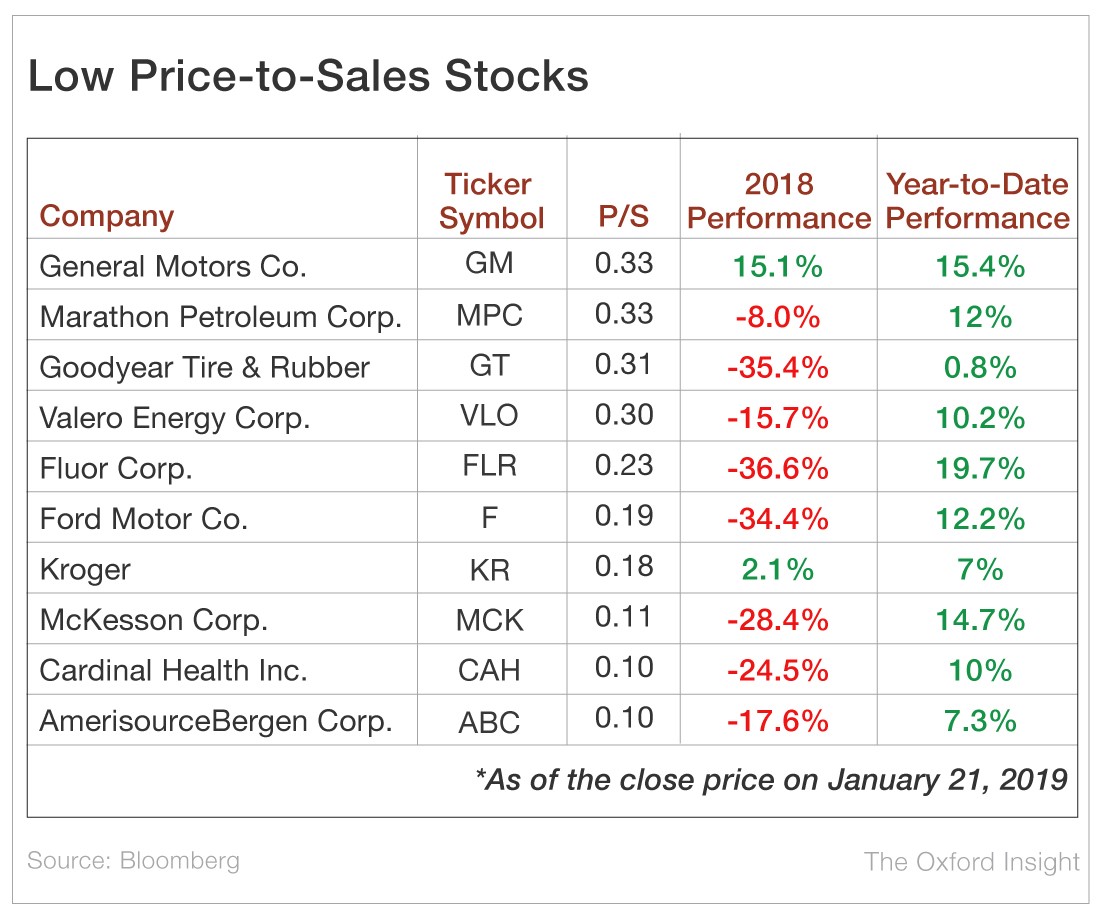These Battered Stocks Are Back With a Vengeance
From the Baltimore Clubhouse – Every crisis gives birth to new opportunities. And this past correction has given us a chance to buy stocks at great prices.
It’s a theme I’ve hammered over the past several weeks. But I’d like to get into some numbers that prove that being value focused is the key to outperforming the market in the long term.
Consider this simple investing strategy I call the “lazy investor” portfolio.
It’s a portfolio consisting of just 10 stocks. And it’s rebalanced once per quarter.
It’s not quite a set-it-and-forget-it strategy. But it’s a low-effort approach that still delivers consistent results…
Over the past decade, this lazy investment strategy has nearly quadrupled the performance of the broad market.

Not bad, eh? And it gets better…
You see, this strategy uses only one metric to accomplish this.
It’s simply the price-to-sales (P/S) ratio.
While looking for low-valued stocks, most investors tend to focus on this metric’s more popular siblings, price-to-earnings ratio and price-to-book ratio.
Studies have shown that large cap stocks with low value metrics – such as price-to-earnings, price-to-book and P/S ratios – tend to outperform their higher-valued peers.
But stocks with low P/S ratios often generate the biggest returns.
So here’s how our lazy investment strategy works…
Step 1: Rank stocks on the S&P 500 based on their P/S ratios.
Step 2: Invest in those with the 10 lowest P/S ratios.
Step 3: Repeat steps 1 and 2 at the end of each quarter.
That’s the entire process in just three steps.
Amazingly, over the last 10 years, this low P/S portfolio offered a cumulative total return of 985% (or 26.9% annualized), compared with just 243% (13.1% annualized) from the S&P 500.
That’s enough to turn $10,000 invested in the “lazy investor" portfolio into more than $108,000, compared with the $34,000 that would have been generated from the S&P 500.
What’s interesting about this approach is it excludes some of the more popular stocks on the market due to their significantly higher valuations.
It excludes some major mega tech stocks too.
This made me wonder… how would the opposite strategy – choosing the 10 most highly valued stocks – work in comparison?
As you might guess, they performed a lot worse.

Stocks with the highest P/S ratios tended to underperform the broad market, delivering only a 159.9% gain over the past decade – or 60% less than the S&P 500.
Now that you’ve seen the power of this strategy, I’m sure you can’t wait to start applying it to your investing.
Below are a list of 10 stocks with low P/S ratios.

Notice that each of these stocks has a P/S ratio below 1. In fact, each company is valued at less than a third of its total annual revenue – a significant bargain.
But as the aforementioned data points prove, these undervalued stocks have a tendency to outperform their peers.
So you may want to consider adding some of these to your own portfolio.
Value investing is a sound strategy not only in bear markets but also in bull markets. And as stocks continue to rebound from last year’s carnage, finding good deals should be every investor’s priority.
Good investing,
Anthony
P.S. Chief Investment Strategist Alexander Green fully understands the immense opportunity in value investing. That’s why he heads The True Value Alert, a VIP Trading Service designed to find undervalued stocks in the market.
And he has a knack for picking out big winners – like Netflix (Nasdaq: NFLX) – years before they take off.